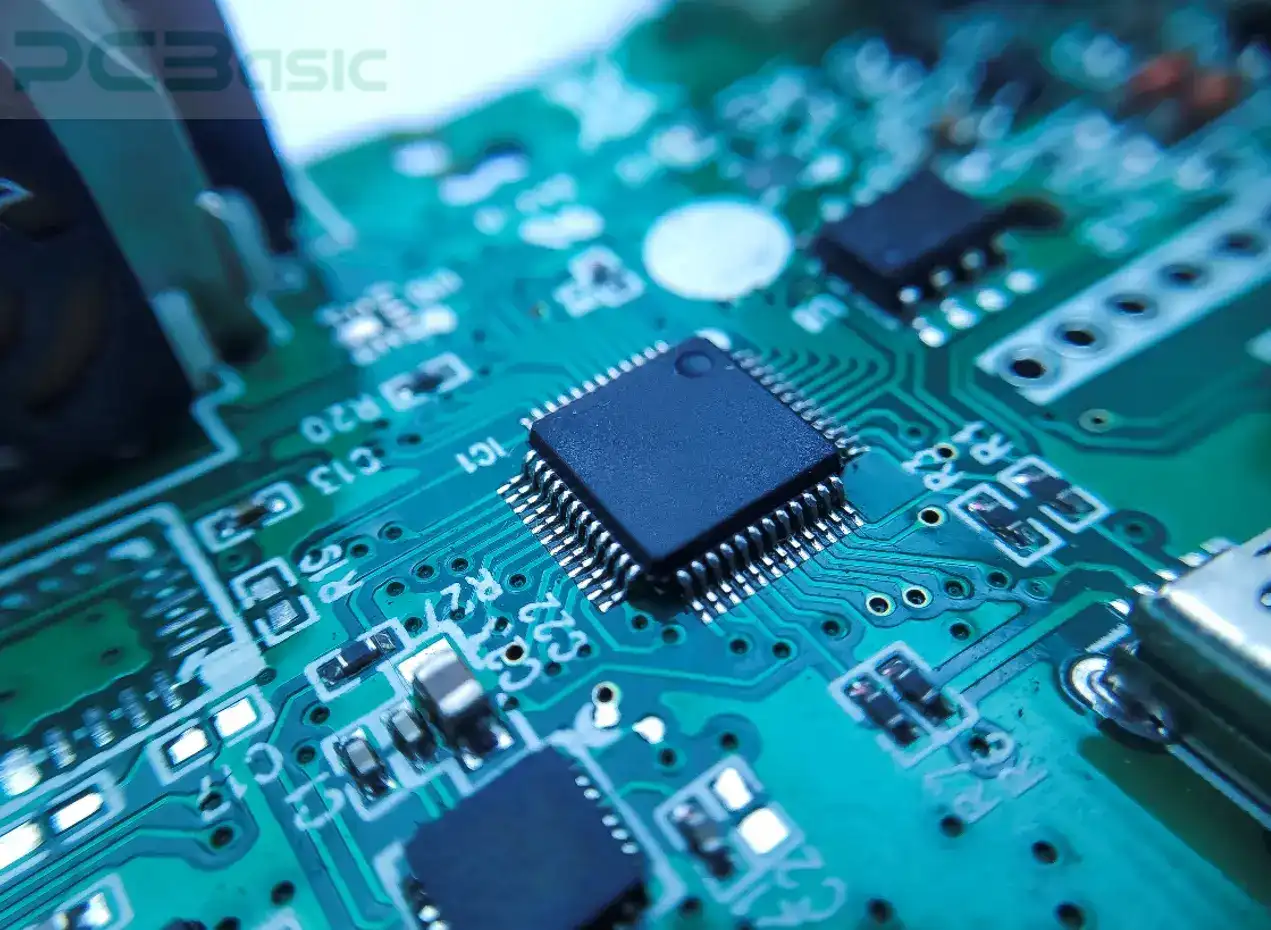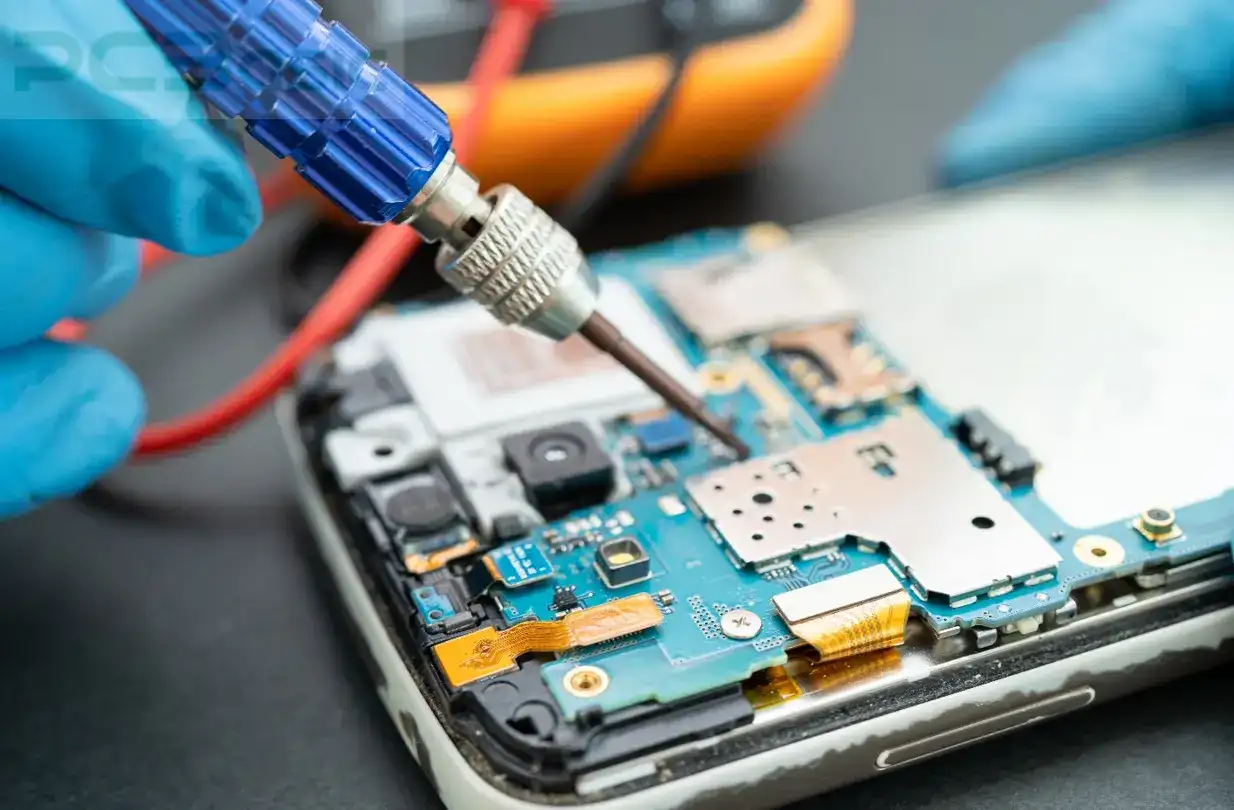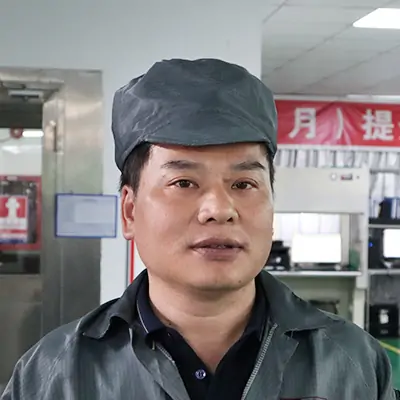Global high-mix volume high-speed Shenzhen PCBA manufacturer

Ru
9:00 -18:00, Mon. - Fri. (GMT+8)
9:00 -12:00, Sat. (GMT+8)
(Except Chinese public holidays)





Global high-mix volume high-speed Shenzhen PCBA manufacturer

Ru
9:00 -18:00, Mon. - Fri. (GMT+8)
9:00 -12:00, Sat. (GMT+8)
(Except Chinese public holidays)





HomePage > Blog > Knowledge Base > How Surface Mount Technology (SMT) is Transforming Modern Electronics
In the early 1980s, surface mount technology emerged as a new technique for mounting electronic components that directly mount the electronic components on the surface of printed circuit boards. Since its invention, surface mount technology has revolutionized the electronic manufacturing industry. This is because it is more reliable, and has lower cost, weight, and volume. In contrast, components are inserted into the printed circuit board in Through Hole Technology (THT). This conventional method is costly, less effective, and has more weight and dense.
The requirements of modern electronic designs are shifting towards smaller, lighter, and higher computational capabilities designs. Surface mount technology has become the pioneer in meeting these requirements with its capabilities to accommodate more components in a given area, higher efficiency, automated assembly process, and cost-effectiveness. In this article, we will explore Surface Mount Technology (SMT) and its differences from through-hole technology, assembly process, and soldering techniques.

SMT
stands for Surface Mount Technology. In SMT, components are directly mounted on
the surface of a printed circuit board. The components that are used for directly
mounting on the surface of the PCB are known as Surface Mount Devices (SMD). Conversely,
in Through Hole Technology (THT), components are inserted into the printed
circuit board. This technology is time-consuming and more prone to errors due
to the human involvement. The SMT, on the other hand, is a completely automated
process that reduces cost and time and increases quality and efficiency. However,
both surface mount technology and through-hole technology can be used on the
same electronic board. This is due to the reason that some electronic
components are not suitable for SMT such as high-power components like DC-DC
converters and transformers.
Surface Mount Technology (SMT) and Through Hole Technology (THT) have become the industry standards in printed circuit board manufacturing. Both these technologies are primarily used for assembling electronic components on the printed circuit board. However, these technologies have distinct features, uses, processes, advantages, and applications.
|
Aspect |
Surface Mount Technology (SMT) |
Through Hole Technology (THT) |
|
Technique |
SMT directly mounts the components on the surface of the PCB
|
THT inserts the components on the PCB via drilled holes.
|
|
Assembly Process |
SMT is a fully automated process using a machine known as a pick-and-place machine.
|
THT is mostly done manually or by automated machine
|
|
Component Placement |
SMT allows for placing the components on both sides of the PCB
|
THT only allows components to be inserted on a single side
|
|
Board Volume |
More components can be fit in a given area.
|
A smaller number of components can be assembled in a given area as compared to SMT.
|
|
Mechanical Stress |
SMT offers fewer mechanical bonds as compared to THT because THT components are inserted through holes. |
THT offers a strong mechanical bond between components and the PCB |
|
Components suitability |
SMT is suitable for SMD devices such as resistors, capacitors, ICs, BGA, microcontroller, and microprocessor ICs |
THT is only suitable for high-power components such as DC-DC converters and transformers. These components are bulky and are not suitable for SMT. |
|
Cost |
SMT's initial cost is higher due to the procurement of automated machines like pick and place machines. However, overall manufacturing cost is less as compared to THT. |
THT initial cost is lower due to the manual process. However, overall manufacturing cost is higher than SMT. |
|
Repair and Reworks |
In SMT, it is difficult to repair and rework once manufactured. |
In contrast, it is relatively easy to do repairs and reworks Through Hole Technology (THT) |
Table I: Surface Mount Technology VS Through Hole Technology
Modern electronic devices are getting smart and lightweight with each passing year such as mobile phones, laptops, and other electronic gadgets. This transition has emerged as a new challenge for scientists to make more complex designs in less electronic board areas. Surface Mount Technology has emerged as the best solution to incorporate these challenges due to its ability to fit maximum surface mount devices (SMDs) in less area, resulting in lightweight and smart electronic devices. It is due to this reason that surface mount technology is extensively being used in almost every electronic industry such as medical devices, aviation, defense, and consumer electronics.
Surface Mount Technology uses an automated machine known as a pick and place machine to produce high volume production, making it ideal for many large-scale industries. SMT's extensive automated process enables it to achieve high efficiency and cost-effectiveness. Components used in surface mount technology known as Surface Mount Devices are very small in size which not only helps to fit more components in a given printed circuit board but is also beneficial for high-frequency circuits. Due to these reasons, large-scale electronic manufacturing industries mostly use SMT technology to manufacture compact, lightweight, smart, and high-quality electronic devices.
Surface Mount Technology offers numerous advantages over through-hole technology, resulting in a major shift in the printed circuit board manufacturing industry to choose surface mount technology. Some of the advantages are:
· In SMT, components are directly mounted on the surface of the electronic board unlike in THT components are drilled into the printed circuit board. This feature of SMT enables to assembly of components on both sides of a printed circuit board, making the more complex designs fit in a less given area.
· Unlike through-hole components, surface mount devices are very small in size, resulting in a maximum number of components to fit on an electronic board.
· The assembly process of surface mount devices is expeditious with the use of a fully automated pick-and-place machine, resulting in high-volume production. The automated assembly process of SMT also enables fast production, high efficiency, and the least margin of error.
· Signal integrity is one of the critical challenges in today’s modern electronic designs. In SMT, the components are smaller and mounted on the surface of the electronic board, resulting in less distance for signals to travel. This improves the problems of cross-talk between signals and reduces inductance and capacitance. Therefore, surface mount devices are ideal for high-frequency circuits.
· The automated pick-and-place machines enable high-volume production, resulting in reduced overall manufacturing costs.

Although, there are a lot of advantages of surface mount technology. However, there are certain disadvantages of SMT as well.
· Surface mount devices are more prone to physical damage. This is due to the reason that SMDs are mounted on the surface of printed circuit boards, unlike in THT, where components are drilled to form greater mechanical bonds.
· It is generally not suitable for high-power components such as DC-DC converters and transformers except for some low power regulators (LDOs). It is poor in heat dissipation.
· The automated machines used in surface mount technology, such as pick-and-place machines, printing screens, and reflow ovens, are costly. Therefore, the initial capital cost of installing the necessary equipment for industry setup is quite high.
· Due to the very small size of components, it is difficult to do any repair and reworks. It is also tough to identify the potential faults in the printed circuit board due to the complex design and small size of components. Special tools such as X-ray machines are required to identify potential faults.
· It is difficult to inspect surface mount technology printed circuit boards because the components are of tiny sizes.
The
process that mounts the surface mount devices onto the surface of the printed
circuit board is known as the SMT assembly process. There are four main steps
in the SMT assembly process. Each step is explained as follows:

Solder paste is a type of mixture that is made up of solder powder and flux. This mixture is used to connect surface mount devices like resistors, transistors, inductors, and ICs to the electronic board assembly. In the first step, solder paste is applied to the pads available on the PCB. This is done by a thin sheet with pre-cut holes known as a stencil.

In the 2nd step, surface mount devices such as resistors, capacitors, and ICs are picked and placed onto the pads of the PCB using an automatic pick-and-place machine.

At this point, components are exactly placed onto the surface of the PCB using a pick-and-place machine. In 3rd step, the Printed Circuit Board is now passed through a heating oven known as a reflow oven. This makes the solder paste melt and solder to form an electrical connection between different components. In the reflow oven, temperature is maintained such that solder paste is accurately soldered to the components. The temperature is programmed as per the reflow profile.

In
this step, visual inspection is carried out using the X-ray machine to identify
any soldering faults and any other defects.

In the final step, PCBs undergo a rigorous cleaning process to eliminate any flux residues left after the reflow soldering process.
The components used in surface mount technology for mounting on the surface of printed circuit boards are known as surface mount devices (SMD). These surface mount devices include several components such as resistors, capacitors, and Integrated Circuits (ICs). All these SMDs come in various sizes and lengths known as packages.
There are different packages of resistors, capacitors, inductors, diodes, and ICs available in the market. Some of the most commonly used packages are:
|
Resistor, Inductor, Capacitor and Diode Packages |
||
|
Package Type |
Size in mm |
Description |
|
0201 |
0.6 x 0.3 |
Tiny size, mostly used in RF circuits |
|
0402 |
1.0 x 0.5 |
Mostly used in sensors and consumer electronics |
|
0603 |
1.5 x 0.8 |
Mostly used in audio devices, defense applications |
|
0805 |
2.0 x 1.3 |
Mostly used in military and industry applications |
|
1206 |
3.0 x 1.5 |
Often used in power electronic devices |
Table Ⅱ: Common Surface Mount Device Packages
|
Integrated Circuit (IC) Packages |
|
|
Package Type |
Description |
|
DIP |
Dual In-Line Package, easy to use and often used in prototype projects. |
|
SOP |
Small Outline Package, is compact and used often in consumer electronics. |
|
TSOP |
Thin Small Outline Package, mostly uses RAM and has a small volume. |
|
QFP |
Quad Flat Package, used to increase board density. |
|
QFN |
Quad Flat No Leads, mostly used in smartphones and industrial electronics. |
|
BGA |
Ball Grid Array, is mostly used for microprocessors and controllers. |
|
LQFP |
Low Profile Quad Flat Package, extensively used in the IC manufacturing industry. |
|
TQFP |
Thin Quad Flat Package, often used in small electronic devices. |
|
SOIC |
Small Outline Integrated Circuit, often used in heat dissipation devices such as LDOs and heat sinks. |
|
TSSOP |
Thin Shrink Small Outline Package, used in consumer electronics |
|
PBGA |
Plastic Ball Grid Array, a type of BGA, is mostly used in the development of microprocessors. |
Table Ⅲ: Common ICs Packages
In the printed circuit board manufacturing industry, mostly two techniques are employed known as wave soldering and reflow soldering.
1. Wave Soldering
Wave soldering is not as common as reflow soldering. This technique is mainly used for Through Hole Technology but it can be used for SMT.
Step 1: Mount the components on the PCB
Step 2: Pass the PCB over a wave of molten solder
Step 3: Solder wets and from an electrical connection
Step 4: Use air/water to cool the PCB.
This technique is less efficient and more prone to errors as compared to reflow soldering.
2. Reflow Soldering
Reflow soldering is one of the most widely used techniques. It is used for high-volume production and has the least margin of error. This technique is mostly used for surface mount technology. The reflow soldering process has the following steps.
Step 1: Apply the solder paste using stencil printing
Step 2: Pass the PCB to pick and place the machine for the placement of components
Step 3: The printed Circuit Board is now passed through a heating oven known as a reflow oven. This makes the solder paste melt and solder to form an electrical connection between different components. The reflow process typically has four stages
a) Preheat
b) Soak
c) Reflow
d) Cooling.
To sum up, surface mount technology is the game changer in the printed board circuit manufacturing industry. Surface Mount Technology has emerged as the best solution to incorporate maximum surface mount devices (SMDs) in less area, resulting in lightweight and smart electronic devices. SMT enables the industries to produce high volume production, making it less costly and increasing efficiency.

Assembly Enquiry
Instant Quote